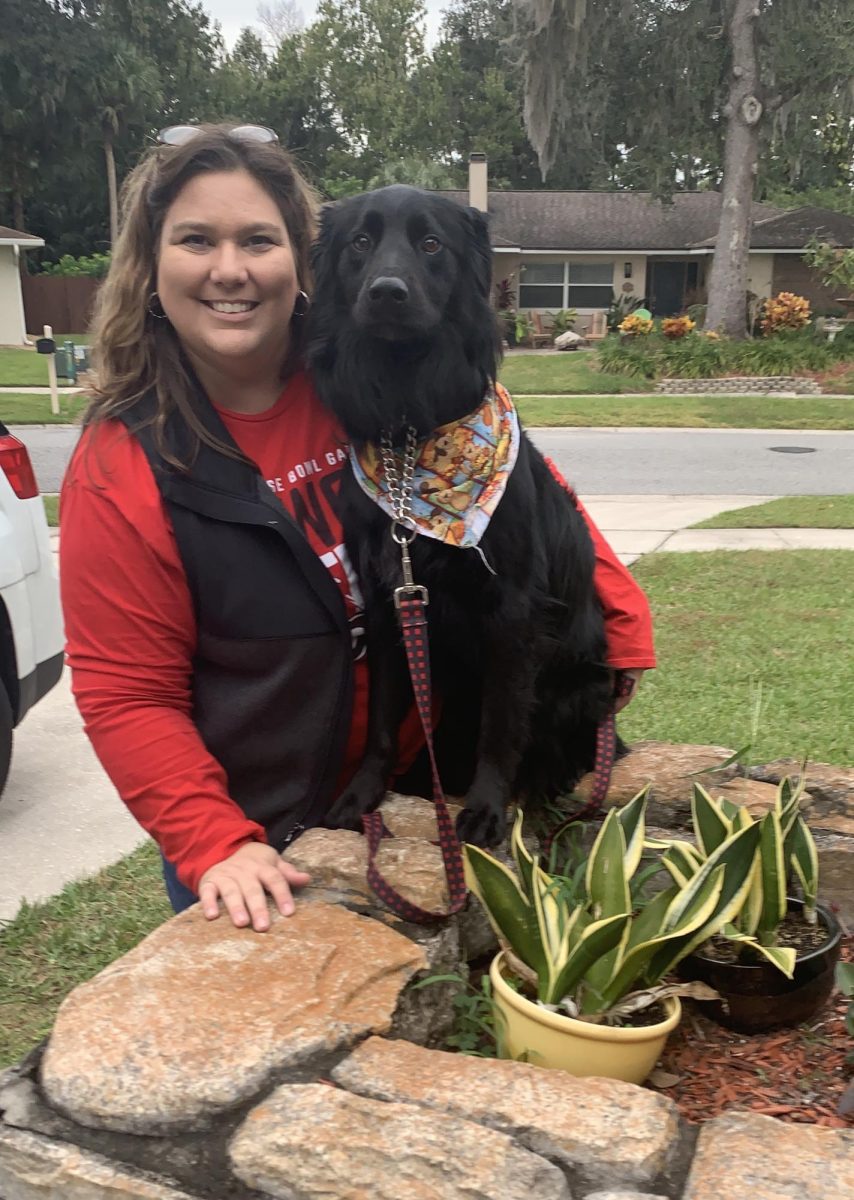During a counseling session, Guidance Counselor Rylan Smith noticed that her student was having trouble opening up about their struggles. When Bailey, Smith’s therapy dog, was brought into the room, the student immediately began to relax, and Smith watched in amazement as the child began to open up about their home life while petting Bailey.
“It’s allowed me to communicate with kids who maybe would not have approached me otherwise,” Smith said. “They’re telling me stuff that they wouldn’t have told me if they didn’t have Bailey there.”
Smith has had an affinity for dogs since she was little. They’ve helped her tremendously as she has navigated through her life, and because of this, she hoped to share the calming power of dogs with other people who are struggling.
“It’s kind of been a dream of mine,” Smith said. “I have always had animals in the house growing up, and I know the power that they possess. I’ve witnessed people being scared or (in) high emotions or that sort of stuff, and then all of a sudden they have animals come up and it’s like everything washes away.”
Petting a dog releases a hormone called dopamine, which allows your body to enter a happy and tranquil state. This is very useful when dealing with highly tense or upsetting situations. Because of their ability to make people comfortable in stressful situations, Smith found dogs to be the perfect partner in her field of work.
“I know how they make me feel,” Smith said. “So between that and then knowing I wanted to go into counseling, it just seemed like a good mix, and that was kind of a nice fit to have a therapy dog that I can still use some of my same counseling skills with.”
Smith is not the only counselor who feels this way. In the U.S. alone, different organizations like the American Kennel Club have helped give back to the community by training over 50,000 therapy dogs for people who need them.
“We put in over 100 hours of observed hours (of service) in different environments,” Smith said. “From nursing homes to fire stations to malls anywhere, we could desensitize them to all different types of things.”
A common misconception is that therapy dogs are the same as service dogs and emotional support dogs. In reality, these animals are trained to help with significantly different procedures. Therapy dogs visit hospitals to help bring a bit of joy and comfort to the people who are going through a tough time.
To be able to do events like this, therapy dogs have to go through coaching and earn multiple certificates to prove themselves able to provide comfort to the public. Therapy dogs are specifically trained to provide comfort to people, as well as give some relief from anxiety and stress.
These dogs are often taken to nursing homes, schools, or even rehabilitation centers to help out the people there. A therapy dog’s tasks vary from those of a service dog, which is trained to provide a specific medical task, or an emotional support dog, which doesn’t have any specific training.
Not all dogs are suitable candidates to support others in therapy, however. Dogs are normally chosen based on their temperament and level of comfort in a variety of situations. Bailey was an easy pick for therapy dog training, given he is very level-headed and from a very smart and willing breed.
“Bailey’s got golden in him, which gives him some of that same temperament, and the border probably makes him smart, which is nice because it’s intuitive,” Smith said.
Smith’s love of dogs and her desire to help people have led both her and Bailey far in their careers. Even after she retires, Smith hopes to continue to be able to bring comfort to those around her using therapy dogs.
“I would love to, especially when I retire, to have a therapy dog that I can take and go to different places and do different things with just as a way to give back to the community,” Smith said.















